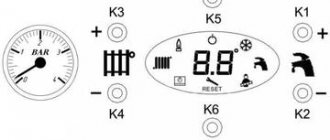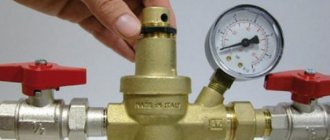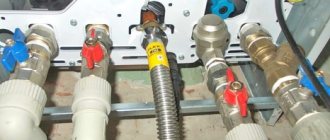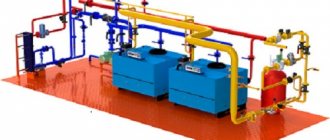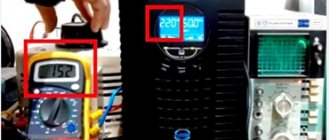European] Vaillant [/ anchor] is well known to professionals and users of heating equipment.
Founded more than 100 years ago, the company has accumulated vast production and technological experience, has developed a lot of its own patented assemblies and parts.
Gas boilers manufactured by this company are known far beyond Europe and are exported not only to Russia, but also to most countries of the world.
The units are famous for their reliability and resistance to external loads; they are being adapted to the technical conditions of the country where they will be operated.
Problems that arise are immediately diagnosed by a system of sensors that signal the appearance of a problem to the display.
Let's take a closer look at this issue.
Popular malfunctions of Vaillant gas boilers
During the operation of the equipment, situations constantly arise when one or another unit is under increased load and may fail.
Situations can arise in a variety of ways, but most of them can be systematized and classified as the most typical. The manufacturer cares about the reliability of its units.
The design of each installation contains a set of special sensors that monitor the state of certain parts and notify the user when a mode failure or failure of a particular element occurs.... These sensors constitute a self-diagnosis system that provides signals to the electronic control board.
The presence of such a system greatly facilitates the process of localizing a malfunction that has arisen, and allows it to be detected at an early stage. The error code takes precedence over other system messages and is displayed in any situation.
This facilitates repairs and ensures the safety of expensive equipment.
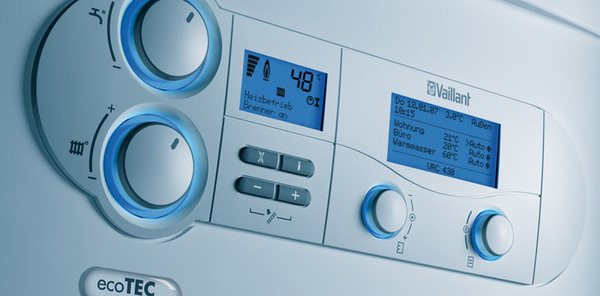
What checks are carried out before starting the boiler for the first time?
For further normal and safe operation, as well as maintaining the warranty, any equipment requires compliance with a number of conditions:
- the voltage in the network according to the rules of the PUE and the obligatory grounding of the boiler (ideally there should be no potential between zero and “ground”, Vaillant allows no more than 1.5 Volts)
- compliance of the system as a whole with the capacity of the installed equipment (lack of capacity for heating or hot water supply prohibits starting). Constant operation of the boiler at the power limit will quickly lead to the failure of the unit.
- verification of compliance with the chimney installation standards (for atmospheric boilers, the presence of draft, for coaxial chimneys, the chimney is protruded and tilted towards the street)
The installation manual also prescribes the installation of a coarse filter on the cold water supply to the boiler and on the return pipe of the heating system, as well as a gas filter.
It is better to study the commissioning process in more detail in the instructions for a specific boiler model.
The selection of the test program (airing, filling the system) is started by turning on the boiler and simultaneously holding the “+” button for 5 seconds. The selected program is activated with the “i” button. There are five preset programs for TEC series boilers.
How to run self-test
The self-diagnostic system is a set of sensors consisting of NTC elements (thermistors) or software products.
All of them operate in a continuous mode, monitoring the state of the connected elements from the moment the boiler is turned on..
Therefore, the self-diagnosis system does not need to be started - it is always on and operates in a constant mode, monitoring the operating mode of units and parts, immediately signaling the occurrence of malfunctions.
In the event of an abnormal situation, a special code will appear on the display, indicating the problematic element of the structure. The user is only required to respond appropriately to an error.
Download instruction
Download instructions for Vaillant boilers.
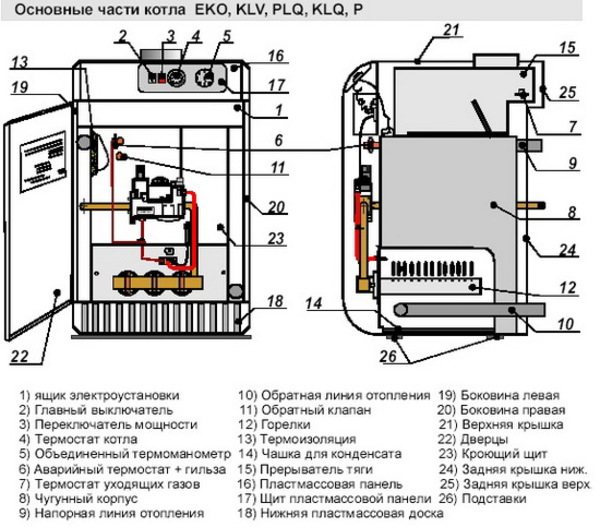

The main error codes (f28, f75) and their short decoding
There are a lot of codes for various errors or malfunctions.
Let's consider the most common ones.:
| The code | Decoding |
| F00 | Open circuit of the supply thermistor |
| F01 | Open circuit of the return line thermistor |
| F02-03 | Opening of the temperature thermistor or storage sensor |
| F04 | Breakage of the return thermistor |
| F10 | Short circuit of the supply thermistor (exceeding 130 °) |
| F11, F14 | Short circuit of the return thermistor (exceeding 130 °) |
| F22 | Dry running (pump failure) |
| F23 | Lack of water. Determined by the temperature difference between the flow and return lines |
| F27 | Parasitic flame |
| F28 | Ignition lock |
| F29 | Failure in operating mode (occurs when the flame goes out and an unsuccessful attempt to ignite) |
| F35 | Error in the gas outlet |
| F37 | Unstable or abnormal fan speed |
| F72 | Error in readings of the sensors of the forward and / or return line |
| F75 | The pump is unable to build up pressure |
| F76 | Overheating of the primary heat exchanger |
IMPORTANT!
In addition to the error codes marked with the letter F, there are status codes marked with the letter S. They inform about the ongoing process and are not errors.
Malfunctions and how to fix them
The appearance of this or that error on the display does not mean that serious problems have arisen. Electronics sometimes perceives the readings of the sensors as signals of a failure or breakdown of a particular unit. Therefore, usually the first action is to reset the error and restart the boiler.
If the error appears several times in a row, there is no longer any doubt about the malfunction.
Consider ways to solve the most common problems:
F 22
Lack of water may indicate that the pump has stopped (check the contacts or the condition of the wire, replace the pump), problems with the make-up tap or with the sensor itself.
F 28
Ignition blocking occurs due to the lack of a positive result on the device's attempts to ignite the gas on the burner. The most likely reason is the failure of the gas fittings, the lack of gas in the pipeline, the ingress of air into the gas pipeline and other problems with the gas supply system.
F 29
The reason for the cessation of gas combustion is most often the cessation of the supply from the gas pipeline, the recirculation of exhaust gases that reduce the gas's ability to ignite, the failure of the ignition transformer. Alternatively, you should check the condition of the grounding electrode.
F 36
This error occurs only on boilers with an atmospheric burner and indicates the ingress of exhaust gases into the atmosphere of the dwelling. The predominant reasons are poor chimney condition, lack of draft (back draft due to external conditions), too short chimney... Often, the reasons are too high a room temperature or a small indent from the walls, made during the installation of the unit.
F 75
After 5 attempts, the pressure in the system does not rise. The reason can be both the presence of air in the pipelines and the failure of the pump.... Alternatively, the expansion tank may be mistakenly connected to the supply pipeline or the total water pressure in the pipeline is weak.
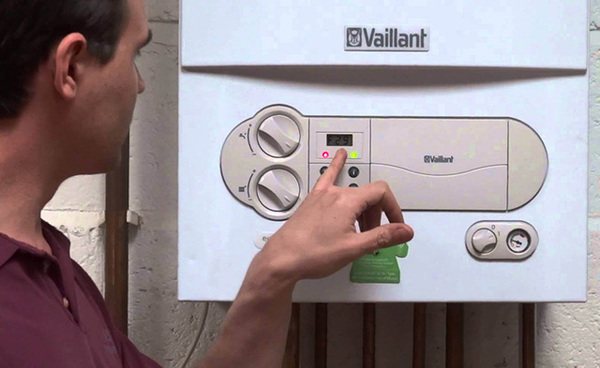

Vilant boiler error f75
Unlike other boilers, the vaillant self-diagnosis system checks that the circulation pump has started up. Since it is able to quantitatively register its change, at the moment of starting the circulation pump, the program checks for a pressure jump of 50 mbar for 20 seconds. The circulation pump is designed to pump the coolant through the system, but at the time of start-up it briefly creates a slight overpressure. The absence of such a jump can be regarded as a malfunction of the circulation pump, and in order to prevent further overheating of the system and improper operation of the boiler, the automation blocks the operation with error F75.
In fact, the F 75 error can also be caused by side effects, for example, clogging of the sensor, air in the heating system, boundary pressure level in the circuit (low, but within the acceptable limit). In the event of a malfunction of the sensor itself, status codes F73 and F74 are provided (when the voltage at the sensor is too low or too high).
The boilers are also equipped with analog pressure gauges, therefore, for diagnostics, the sensor readings can be compared with the readings on a mechanical pressure gauge. The accuracy of the mechanical pressure gauge is in the order of 0.2 bar.
Why does the pressure drop
The pressure drop in the boiler has only one reason - a coolant leak. If, after several attempts to raise the pressure using the supply valve, no positive results appear, you should look for a leak in the boiler itself or in the heating circuit.
Difficulty can arise if the boiler is condensing and is connected to a floor heating system.
Finding leaks in such conditions is extremely difficult. It may turn out that the malfunction is hidden in the dump valve connected to the sewer system..
The best way to find the causes is to consistently eliminate possible causes of leaks, so that in the end one, the correct one, remains.
NOTE!
Certain information can be obtained if you try to determine the intensity of the leakage and analyze the throughput capacity of the boiler elements involved.
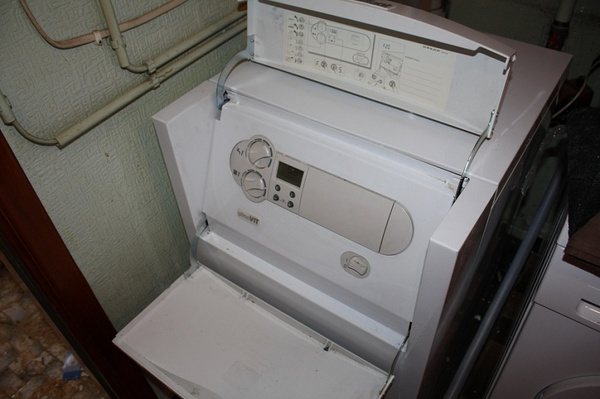

Pressure rises
An increase in pressure can be triggered by an open make-up valve. This can be determined simply - continuous make-up sharply reduces the possibility of heating the coolant, which causes the outlet temperature to decrease.
At the same time, the valve should be triggered, bleeding the excess air pressure into the sewer... It is possible for the OM to boil in the heat exchanger, which also causes an avalanche-like increase in pressure due to a sharp expansion of the volume.
Alternatively, the control board may fail. The issue can be resolved by resetting to factory settings.
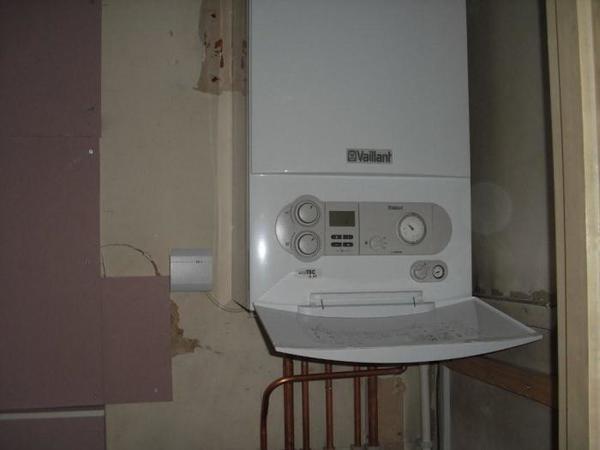

Inspection and maintenance of the boiler
The gas boiler is recommended to be serviced annually. Basically, maintenance is reduced to visual inspection and preventive cleaning of the main components: heat exchangers, combustion chambers, coarse filters and the condition of the expansion tank.
The primary heat exchanger is cleaned from the outside of soot with a soft brush. In no case should you use brushes with metal bristles, because the copper plates are treated with a special anti-corrosion coating and its damage will lead to a serious reduction in its service life. Due to the design feature, the primary heat exchangers from the inside in most cases cannot be flushed, its service life can be seriously reduced from the use of antifreeze or frequent replenishment with tap water of increased hardness.
The secondary heat exchanger (DHW), due to the constant passage of water through it, is more susceptible to the formation of deposits and scale, but at the same time it can be successfully washed with a certain frequency. Heat exchangers are washed with special installations (boosters) using special equipment.The process consists in long-term (sometimes up to several hours) pumping of chemicals that help dissolve and wash out scale. Valiant recommends flushing with normal acetic acid.
The expansion tank is designed to compensate for the thermal expansion of the heating system and is also subject to annual maintenance. It consists in measuring its pressure. The measurement must be done on an empty boiler and, if necessary, pumped up to the static pressure of the system (approx. 1-1.2 bar). If water comes out of the control fitting, this indicates that the tank membrane is not tight and the need to replace it.
It is imperative to rinse and clean the heat exchangers in a timely manner, because dirt and scale deposits reduce the thermal conductivity and flow area, which leads to a decrease in the efficiency of the boiler and overheating, and subsequently expensive replacement.
It is recommended to set the hot water supply temperature so that it is not diluted with cold water, thus ensuring minimum heating. The lower the hot water temperature, the lower the scale formation rate.
Coarse filters are nets, so their maintenance is reduced to removal and rinsing under running water to the desired state.
A gas burner can become clogged and build up over time from combustion products and is usually easy to clean with a soft brush and vacuum cleaner. If there is heavy dirt, then it can be easily removed.
Doesn't restart
There are many reasons for refusing to restart the boiler. It is almost impossible to name them all, since most of the problems one way or another lead to the blocking of the installation, and restarting becomes impossible until the cause is eliminated. However, some possible reasons can be named immediately.
For example, the power plug in the outlet might be upside down. Vaillant gas boilers are phase-dependent, i.e. cannot work when the contacts are re-phased... If a reconnection occurs during repair work, the unit will not be able to start.
In addition, the injectors can become clogged with soot, which no longer pass gas in the required amount, as a result of which a blockage immediately follows at start-up.
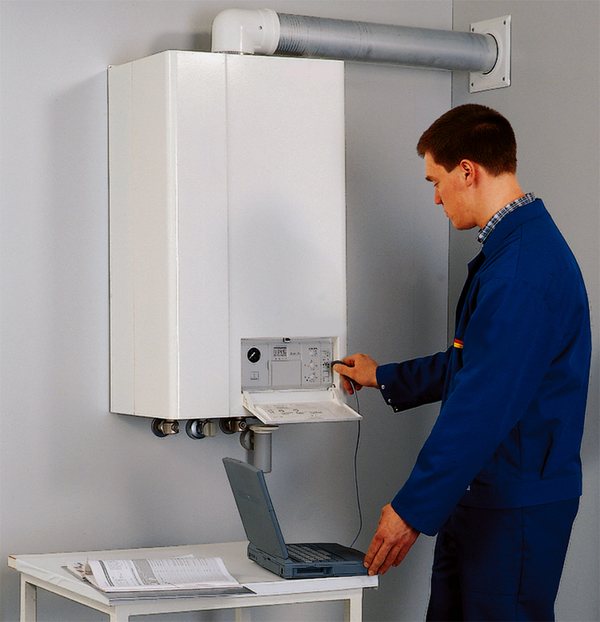

Checking the functioning of the boiler
And after the unit has been installed, it is also necessary to perform several manipulations that will make sure that the unit's performance is at the desired level. To do this, it is necessary to connect the device and check the gas supply lines, heating installations and other pipelines for leaks.
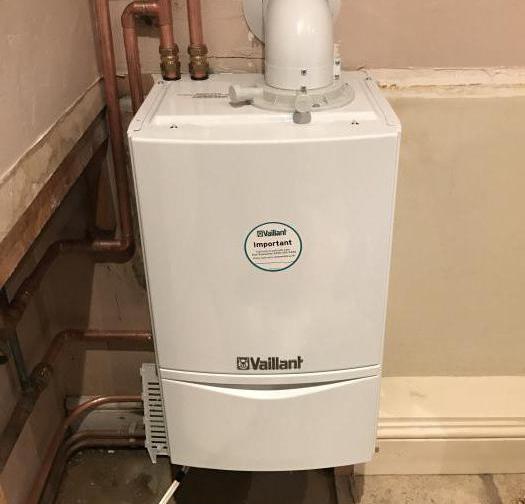

You also need to make sure that the burner flame readings are in the correct position.

